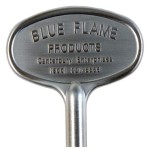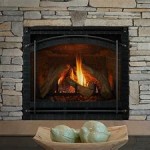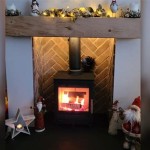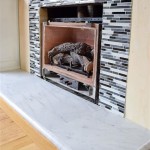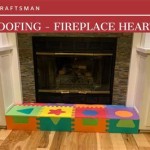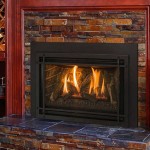Wood Fireplace Surround Code: A Comprehensive Guide
Wood-burning fireplaces provide aesthetic appeal and supplemental heating to homes. However, due to the inherent fire risk associated with open flames, strict building codes govern the installation and construction of wood fireplace surrounds. These codes are designed to minimize the risk of fire spreading from the fireplace to the surrounding combustible materials, ensuring the safety of occupants and property. This article will provide a comprehensive overview of the key code requirements related to wood fireplace surrounds, focusing on clearances to combustibles, hearth extensions, and acceptable materials.
Clearance to Combustible Materials
One of the most critical aspects of wood fireplace surround code compliance is maintaining adequate clearance between the fireplace opening and any combustible materials. "Combustible materials" refers to any material that can ignite and burn, including wood framing, wall coverings, mantels, and trim. The specific clearance requirements depend on several factors, including the type of fireplace (factory-built or masonry), the listing of the fireplace (if applicable), and the size of the fireplace opening.
Generally, building codes prescribe minimum distances for combustible materials. For example, the National Fire Protection Association (NFPA) 211, "Standard for Chimneys, Fireplaces, Vents, and Solid Fuel-Burning Appliances," provides guidance on clearance requirements. Local building codes often adopt or adapt NFPA 211 and may have additional or more stringent requirements.
For masonry fireplaces, a common requirement dictates that combustible materials must be at least 6 inches from the firebox opening and 12 inches from the sides of the firebox opening that project 6 inches or more from the face of the fireplace. This means any wood framing, trim, or other combustible elements surrounding the fireplace must adhere to these minimum distances. These clearances are intended to prevent heat from the fireplace from igniting the surrounding materials. It is essential to consult with local building officials or a qualified fireplace installer to determine the exact clearance requirements for a specific project.
Factory-built fireplaces often have specific installation instructions and clearance requirements outlined in the manufacturer's listing and labeling. These instructions supersede general code requirements if they are more restrictive. The fireplace's listing will specify the approved clearances to combustible materials, and it is crucial to adhere to these instructions during installation. Failure to follow the manufacturer's instructions can void the fireplace's warranty and, more importantly, create a fire hazard.
In cases where it is impractical or aesthetically undesirable to maintain the required clearances to combustibles, it may be possible to install a non-combustible shield. A non-combustible shield is a layer of fire-resistant material, such as cement board, metal, or brick, that is placed between the fireplace and the combustible material. The shield must be installed in accordance with the manufacturer's instructions and building code requirements. The shield redirects heat and prevent combustible materials from reaching ignition temperatures. The design and installation of a non-combustible shield must be properly engineered to ensure it provides adequate protection.
It is important to note that clearance requirements apply not only to the immediate surround of the fireplace but also to any combustible materials above the fireplace opening, such as mantels. Mantels must be located at a sufficient distance above the fireplace opening to prevent them from overheating and igniting. Building codes typically specify minimum distances for mantels based on their depth and projection from the wall. The deeper the mantel, the higher it must be placed above the fireplace opening to maintain safe clearances.
Regular inspections of the fireplace surround are recommended to ensure that clearances to combustibles remain adequate. Over time, settling of the house or modifications to the surrounding area could alter the clearances and create a fire hazard. Any changes to the fireplace surround should be reviewed by a qualified professional to ensure continued compliance with building codes.
Hearth Extension Requirements
The hearth extension is the non-combustible area in front of the fireplace opening that protects the floor from sparks and embers. Building codes mandate specific dimensions for hearth extensions to provide adequate protection against fire hazards. The size of the hearth extension depends on the size of the fireplace opening and whether the fireplace is raised or flush with the floor.
For fireplaces with an opening of less than 6 square feet, the hearth extension must extend at least 16 inches out from the front of the fireplace and at least 8 inches beyond each side of the fireplace opening. For fireplaces with an opening of 6 square feet or more, the hearth extension must extend at least 20 inches out from the front of the fireplace and at least 12 inches beyond each side of the fireplace opening. These dimensions are intended to provide a sufficient buffer zone to catch any sparks or embers that may escape from the fireplace opening, preventing them from igniting the surrounding flooring or furnishings.
The hearth extension must be constructed of non-combustible materials, such as brick, stone, concrete, or tile. The materials must be sufficiently thick and durable to withstand the heat and weight of the fireplace and any accessories. It is important to ensure that the hearth extension is properly supported and level to prevent cracking or shifting over time. The hearth extension should also be securely attached to the surrounding flooring to prevent tripping hazards.
If the fireplace is raised above the floor, the hearth extension may need to be larger to compensate for the increased risk of embers rolling or falling off the elevated surface. Local building codes may have specific requirements for hearth extensions for raised fireplaces. It is important to consult with building officials or a qualified fireplace installer to determine the appropriate size and construction of the hearth extension for a raised fireplace.
The hearth extension must be maintained in good condition to ensure its continued effectiveness. Cracks, gaps, or loose materials can compromise the integrity of the hearth extension and increase the risk of fire. Regular inspections and repairs are recommended to keep the hearth extension in optimal condition. Any damage to the hearth extension should be promptly repaired by a qualified professional.
Acceptable Materials for Fireplace Surrounds
Building codes restrict the use of combustible materials in close proximity to the fireplace opening. The selection of appropriate materials for the fireplace surround is critical to ensuring fire safety. Non-combustible materials such as brick, stone, concrete, tile, and metal are generally acceptable choices for fireplace surrounds.
Brick and stone are traditional choices for fireplace surrounds due to their inherent fire resistance and aesthetic appeal. These materials can withstand high temperatures and provide a durable and long-lasting surface. Brick and stone are available in a wide variety of colors, textures, and sizes, allowing for a wide range of design options. When using brick or stone, it is important to use a fire-resistant mortar to ensure that the joints between the materials are also non-combustible. The mortar should be specifically designed for high-temperature applications and should be applied according to the manufacturer's instructions.
Concrete is another popular choice for fireplace surrounds. Concrete can be cast into various shapes and sizes, allowing for custom designs and architectural details. Concrete can also be stained or textured to create a variety of aesthetic effects. When using concrete, it is important to ensure that it is properly cured and sealed to prevent cracking and moisture damage. The concrete should also be reinforced with steel or other materials to provide additional strength and durability.
Tile is a versatile material that can be used for fireplace surrounds. Tile is available in a wide variety of materials, including ceramic, porcelain, and stone. Tile is fire-resistant, easy to clean, and available in a wide range of colors, patterns, and sizes. When using tile, it is important to use a fire-resistant grout to ensure that the joints between the tiles are also non-combustible. The grout should be specifically designed for high-temperature applications and should be applied according to the manufacturer's instructions.
Metal is another option for fireplace surrounds. Metal can be used to create a variety of modern and industrial designs. When using metal, it is important to ensure that it is properly grounded to prevent electrical hazards. The metal should also be coated with a fire-resistant paint or finish to prevent corrosion and improve its fire resistance.
Combustible materials, such as wood, should not be used within the prohibited clearance zones around the fireplace opening. If combustible materials are desired for aesthetic purposes, they must be located outside the specified clearances or protected by a non-combustible shield. The shield should be properly designed and installed to provide adequate protection against fire hazards.
It is important to verify the suitability of any material used for a fireplace surround with local building officials or a qualified fireplace installer. They can provide guidance on the specific code requirements and ensure that the materials meet the necessary fire safety standards. Proper material selection is essential to ensuring the safety and longevity of the wood fireplace surround.

Fireplace Safety And Codes

Fireplace Hearth Extension Rules Structure Tech Home Inspections

Mantel Clearance For Masonry Versus Manufactured Fireplaces

Fireplace Mantel And Surround Clearances Fine Homebuilding

Fireplace Surround Code Requirements Outdoor Designs Hearth
Mantle And Fireplace Surround Minimum Clearances
Wood Fireplace Insert And Required Clearances Hearth Com Forums Home

Fireplace Safety And Codes

Fireplace Mantel Clearance Codes Wood Insert And Required Clearances Inserts Shiplap
Another Mantel Surround Clearance Issue Here Hearth Com Forums Home
Related Posts

